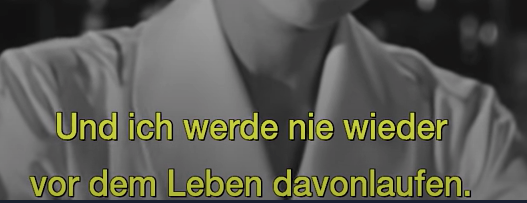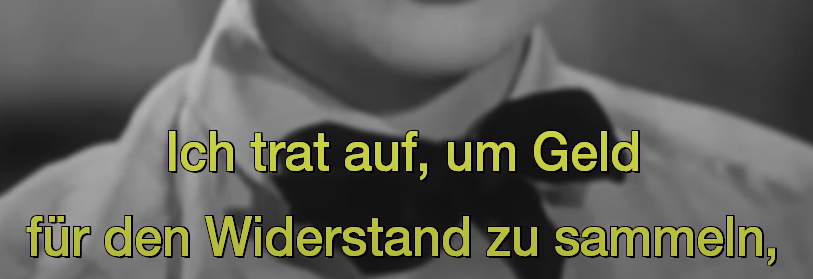Subtitling versus dubbing

On German television it has been standard for donkey’s years to show foreign films dubbed in German (with the exception of “Dinner for one” on New Year’s Eve, of course). DVDs and streaming services offer the choice of “original with subtitles” – but with films and series on TV international actors and actresses are still “dished up” with German voices.
Since I was familiar with dubbing from childhood and thanks to the fact that many actors and actresses kept the same dubbing voices for years or even decades, I never had a problem with it. On the contrary, when I moved to the Netherlands, where there is no dubbing at all due to the relatively small language community, I initially had difficulties with the subtitling of international films. I was constantly distracted by this poring over text when I would rather have concentrated on the main suspect’s tell-tale flinch!
Things got interesting when German films were broadcast with Dutch subtitles. Through Tatort Detective Schimanski I learned that in Germany swearing is more faecal and in the Netherlands more sexual. This undoubtedly falls into the category of “useless knowledge”, but the comparison makes reading the subtitles much more interesting!
However, that won’t make me a really hard-core consumer of subtitles. Such fanatics even watch Swedish, Danish or Spanish films with subtitles, even if they don’t understand a word of the spoken language. British TV has also dubbed for years, but Scandinavian detective series like “The Killing” (Kommissarin Lund) and “The Bridge” in the original had a huge cult following. For myself, English-language films have become routine, and there is perhaps something to the pro-subtitle argument of the Dutch. They argue that by watching the original films in English, you learn English sooner, faster, better and with less accent.

This assessment is shared by Vanja Höllersberger in her thesis “On the problem of film subtitling: an analysis based on the Serbian translation of ‘Goodbye, Lenin!’” She compares the advantages and disadvantages of subtitling and dubbing as follows:
Advantages of subtitling
– The original sound of the film is preserved.
– The process is relatively inexpensive.
– Reading subtitles while listening to the original sound promotes learning the foreign language.
Disadvantages of subtitling
– Subtitles cover the lower part of the screen and detract from the overall picture.
– The distraction of the audience from the film plot
– The distortion caused by poor matching of subtitles to the film dialogue (“abbreviation kills complexity”)
Advantages of dubbing
– The picture is not affected.
– Viewing a film is more convenient for the audience and also possible for illiterate people, people with low reading speed and pre-school children.
– It provides an additional field of work for actors.
Disadvantages of dubbing
– Authenticity is compromised because the real voices of the actors are not audible.
– In the worst case, the dubbing seems artificial and does not correspond to the “normal speech”.
– The method is expensive, especially for small language communities.
The film “Goodbye, Lenin”, which deals with life in the GDR – interspersed with socialist phrases – is certainly an interesting object of study for this question.
There are a few films where the (subjectively felt) deficits of the dubbing made me curious about the original. One example is the pre-Christmas traditional film “The Little Lord” in the 1980 film version, because I always found the 8-year-old Cedric rather precocious and a bit boring in the German version. In the original, the difference between the boy’s cheerfully casual American English and the “very British” English of the adults around him – led by Alec Guinness – became clear in the first place and gave the film much more “pepper”.

Sometimes the dubbed version can improve on the original. The English series “The Persuaders” with Roger Moore and Tony Curtis became a much more amusing, witty “Die 2”.
Since obviously both methods have their pros and cons, it’s good that we can choose according to our own preference when it comes to sources other than television. And in the end, the real purists still have the “original with subtitles evening” at the cinema…
Original text: BBR
English translation: BCO

